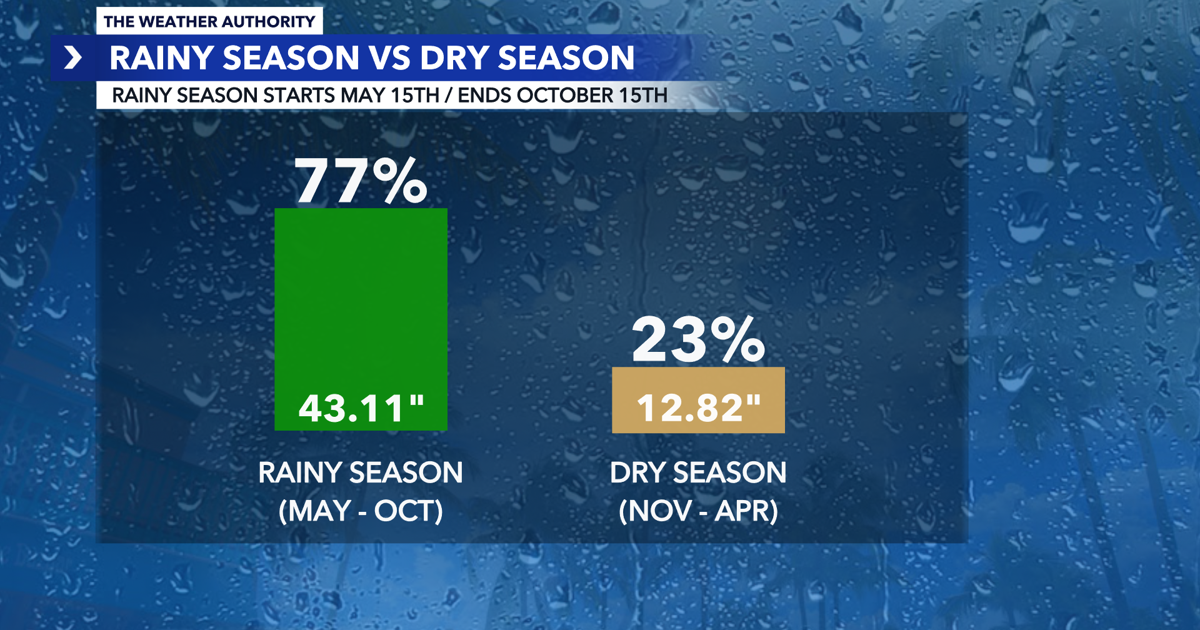Wednesday marks the official end of rainy season and the start of dry season here in Southwest Florida.
Dry season runs from Wednesday to May 15. During that time, Southwest Florida receives only about a quarter of our yearly rainfall total. That begs the question of why does mother nature’s faucet turn off during the dry season?
The main factors that result in the switch from rainy to dry season include lower humidity and lower air temperatures. A subtropical ridge sits over Southwest Florida during the rainy season, bringing higher humidity and light winds. This is what sparks the daily sea breeze-driven showers and thunderstorms. Significant daytime heating is also necessary for the summertime sea breeze.
Around the middle of October, a dip in the jet stream typically nudges that subtropical ridge out of the region. Humidity decreases, cold fronts begin to move across Florida, and the daily sea breeze-driven showers and thunderstorms are no longer in play.
Most of the rain received during the dry season is a result of stronger fronts that move through Southwest Florida, providing enough energy and moisture in the atmosphere to squeeze out showers and storms. The occasional low-pressure system can also provide enough lift in the atmosphere to produce rain.
Features of our dry season include lower humidity, cooler nighttime temperatures, less cloud cover, less rainfall, and eventually a higher fire risk due to dry vegetation.
Communities in Southwest Florida along and east of Interstate 75 are the big winners of the rainy season, while communities closer to the coast are seeing a rainfall deficit this year.

